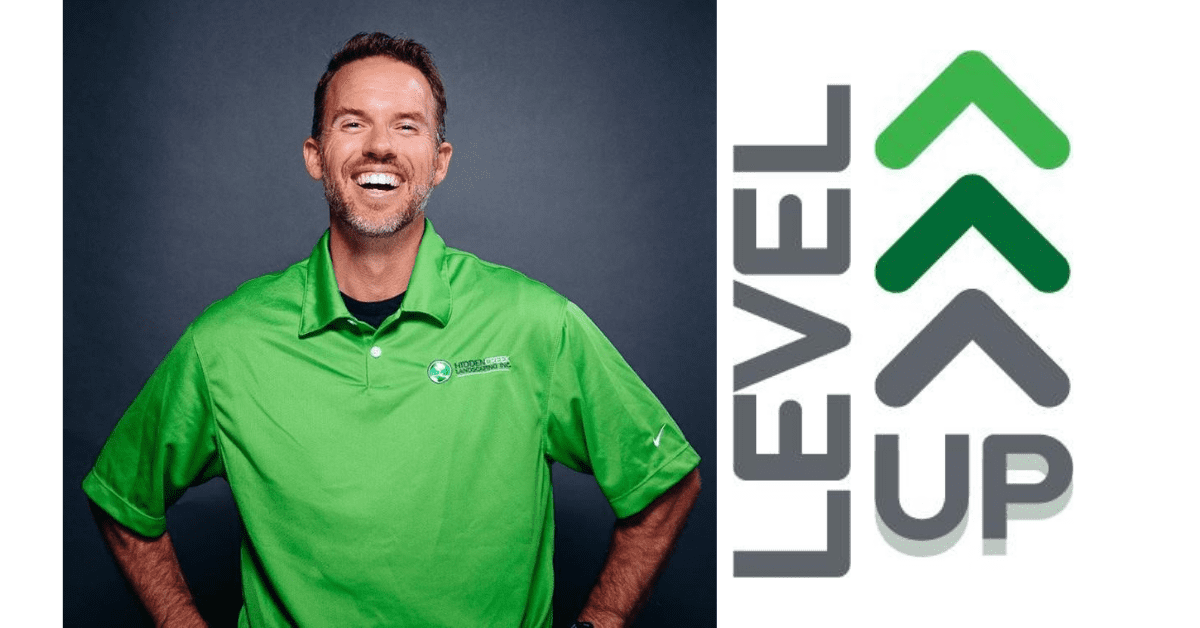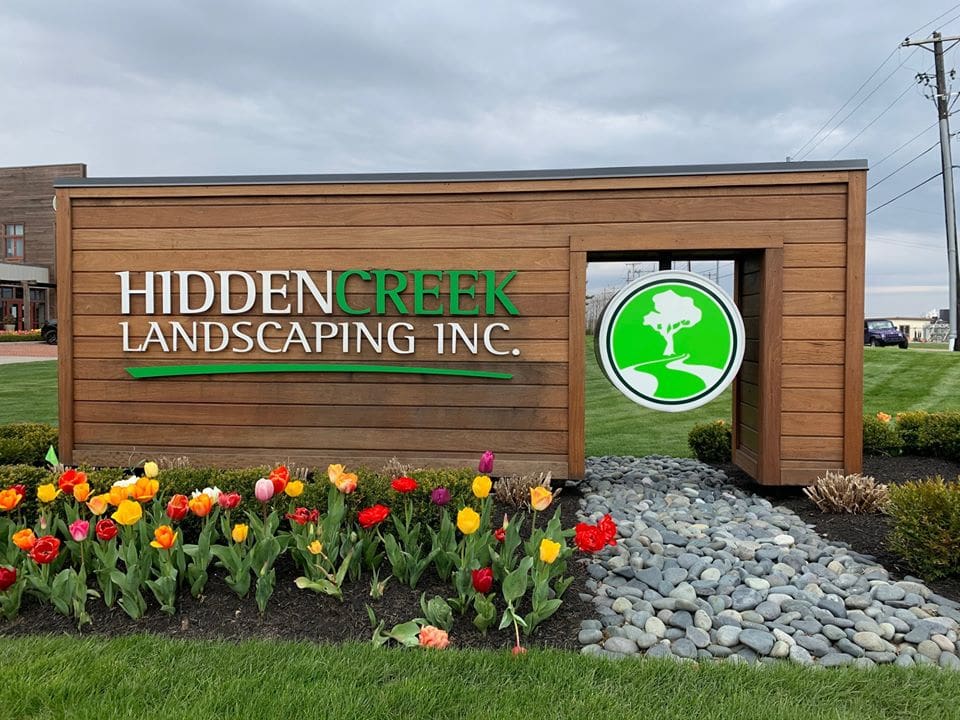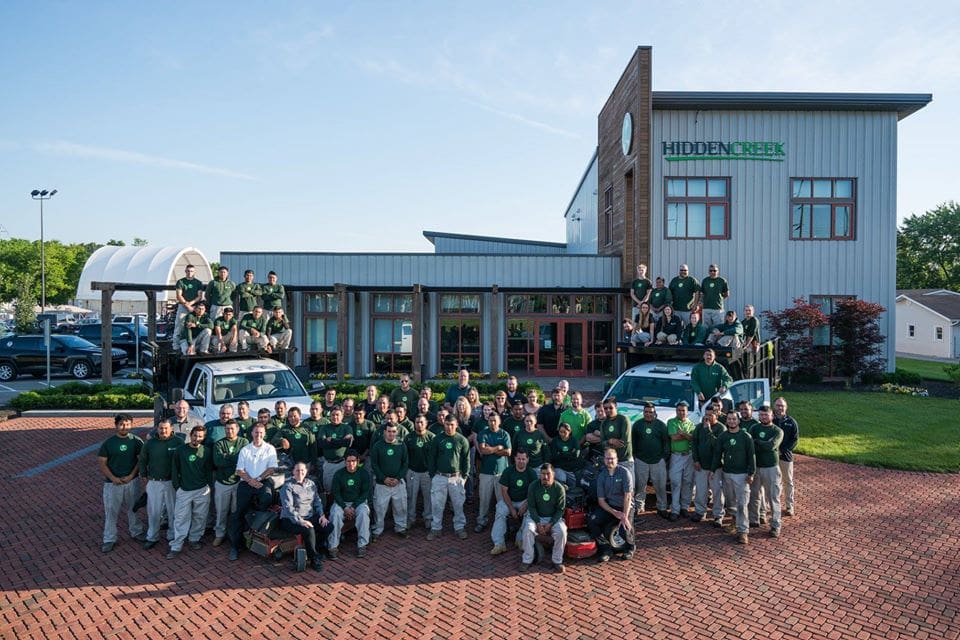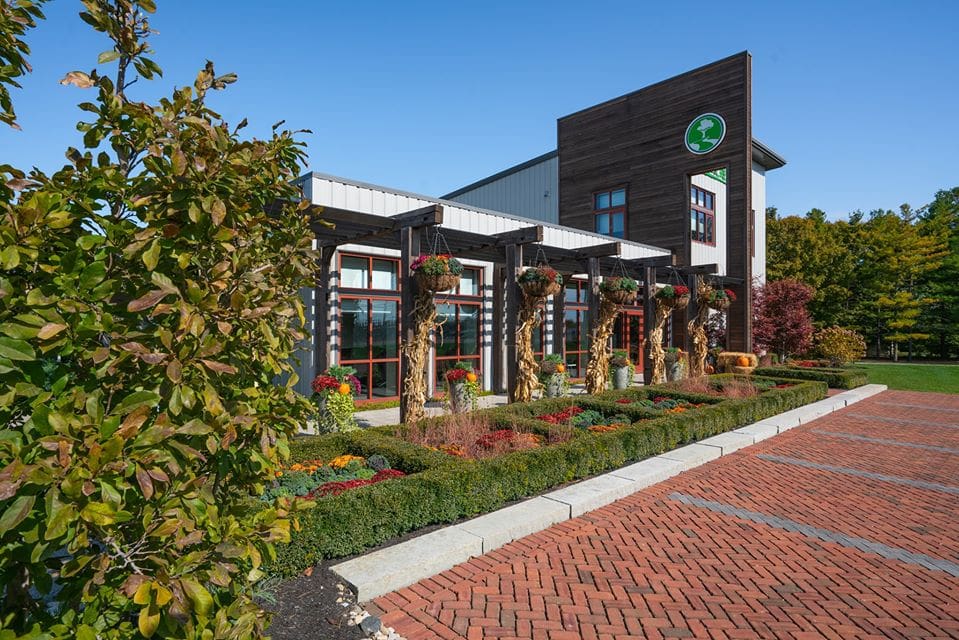
Our Level Up series shares the strategies that help landscape and lawn care companies get to the next level.
When asked what ideal company size he’d like to reach for Hidden Creek Landscaping Inc., based in Hilliard, Ohio, CEO Jason Cromley simply answered, “Bigger. Always bigger.”
Founded in 1998, along with co-owner Matt Seiler, Hidden Creek Landscaping currently has a goal for $13.5 million in annual revenue and made $12.5 million last year. The company has been offering design/build, maintenance and snow services from the beginning.
Keys to Growth

Cromley credits marketing/branding, reinvestment into equipment and better staffing as the three main elements that helped them in their growth.
“We try to create a brand image different than other landscape companies, meaning we didn’t want to look like a landscaping company,” Cromley says.
Cromley says this is due to the stereotypes connected with landscaping companies. They didn’t want to be considered like the rest. Instead, they wanted to come across as a group of professionals that handled anything exterior that specialized in landscaping. He says they also make a point to buy newer equipment to stay ahead of their competition.
As for better staffing, Cromley says consultants helped them understand how to use the DiSC personality test to hire better-qualified people.
“We can raise our game,” Cromley says. “Instead of trying to hire for the position now, we’re trying to hire for tomorrow’s position.” He admits that it does make hiring much harder and you have to be patient.
One lesson the company learned the hard way was not having a plan in place for growth. Cromley advises getting a strong leadership team in place who can help you form a strategic plan that outlines where you want to be in three years.
He also says consultants were particularly helpful in guiding and directing him and Seiler, who both had horticulture degrees.
“There was no business degree involved,” Cromley says. “We were at $5-6 million and we didn’t know what we were doing. It used to be, ‘I’m so smart, I don’t need a consultant. I know what I’m doing’ and then I talk to a consultant and I was like “I’m a real idiot. I should have been doing this years ago.”
Cromley recommends switching up consultants every three to five years.
Periods of Sudden Growth

A recent example of one of Hidden Creek’s growth spurts was in 2017 when they experienced close to 35 percent growth in one year. Cromley says there were a number of factors that contributed to this, including working on their estimating system. He says one of the biggest elements that changed was their efficiency in the field, thanks to it being their second year to receive their returning H-2B workers.
“We realized our learning curve had been shortened down extremely from prior years,” he says. “We saw a major increase in efficiency with installation times. We were used to the normal retraining of people for three months. They came in trained and ready to go.”
Due to the unpredictable nature of H-2B, Cromley says it is extremely stressful and they have been lucky enough to receive their workers every year aside from the first year they applied for H-2B workers.
“With regards to budgeting, we have to create two budgets to start off every year,” he says. “It’s the H-2B workers made it back and the H-2B workers didn’t make it back.”
Cromley says they also grew rapidly in 2007-2008 during the recession thanks to the development of some larger contracts.
Networking and Setting Goals
Cromley admits that for years they didn’t attend NALP events. Then seven years ago, they went to one of their first events and became wildly addicted to it.

Photo: Hidden Creek Landscaping Inc.
“We made a lot of friends very quickly, had a ton of resources that came out of it and were able to really expand our footprint in the industry,” Cromley says.
He says he got involved with NALP committees and boards and really tried to understand the industry as a whole. He says the networking has been the biggest benefit.
“I’m always looking to network with bigger companies because obviously, that’s what I’m aspiring to do,” Cromley says.
He does say you need to make the decision of what you want to achieve with your company, including its size. For Cromley, he finally knew he wanted a big company when visiting a much larger landscaping company.
“I saw his success,” Cromley says. “I saw this house. I saw his equipment, and I said, ‘I want that.’ It just happened to coincide when my wife asked me, ‘Is this a career, or is this a job? Because you have two kids that you have to take care of and we’re not going to make it.’ So, seeing somebody that had it, and having the pressure to want more, that was it for me. That’s all I needed.”
Overcoming Challenges
While as a company Hidden Creek is always looking to become bigger, Cromley says they have struggled with having some employees who are very happy and content with where they are and the thought of growth is hard for them.

Photo: Hidden Creek Landscaping Inc.
“Since we always want to grow, some of those people have definitely seen themselves away from our company, because they just were very content with where we were, and unfortunately leadership is not that way,” Cromley says. “We spend a lot of time trying to get everybody on board. I communicate with our team openly and frequently to make sure they understand. They all know the sales goal going into the year. They know their sales goal before every year starts. We don’t surprise them with what’s in the pipeline, so we’re very transparent with our team.
As for maintaining their company culture, Cromley says they have monthly company meetings and add as many benefits as they can every year. They even have a strategic plan in place to continuously keep adding to the benefits.
“When I started a landscaping company, I didn’t think I’d ever have to have an HR department,” he says. “I didn’t think I’d have to have a marketing department. I didn’t think I’d have company culture ambassadors. We have all those things now.” Hidden Creek also sends out employee surveys twice a year and Cromley’s business partner Seiler has taken on going out into the field and training staff.
Plans for the Future

Photo: Hidden Creek Landscaping Inc.
Because Hidden Creek is always looking to expand its footprint, Cromley says he would love to eventually be present in other states as well. He says he’s looking to grow the whole business into other locations, not just with maintenance, despite what consultants have suggested to him.
“I’m not trying to be just a maintenance company that sets up locations and you’re just here to mow the world,” Cromley says. “Not to say that that’s not needed, but that doesn’t excite me. I’m a designer, I’m a builder, I’d like to do it that way.”
As for how Hidden Creek would expand into new locations, Cromley says it would be a mixture of organic growth and acquisitions. The company has done a couple of buyouts of very small businesses in the past. Cromley says if he was looking to buy another, he’d look for a smaller company to purchase so he could have his influence on them.
Click here to read more Level Up stories.


Comments are closed.